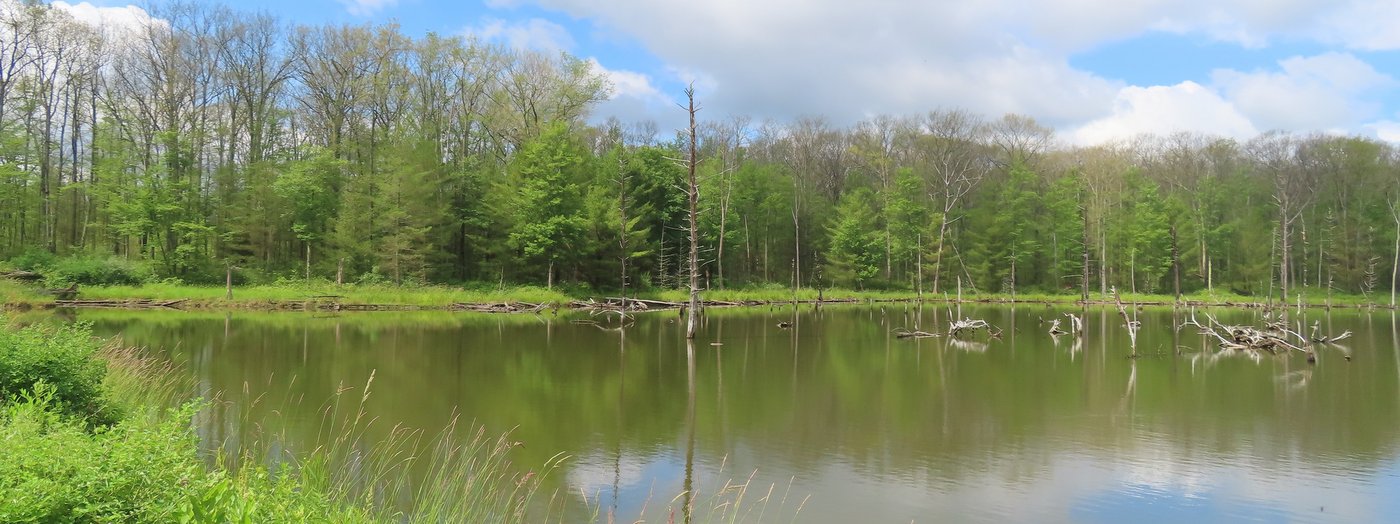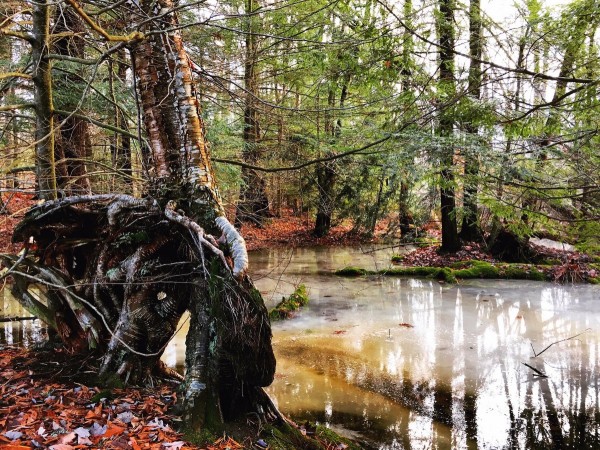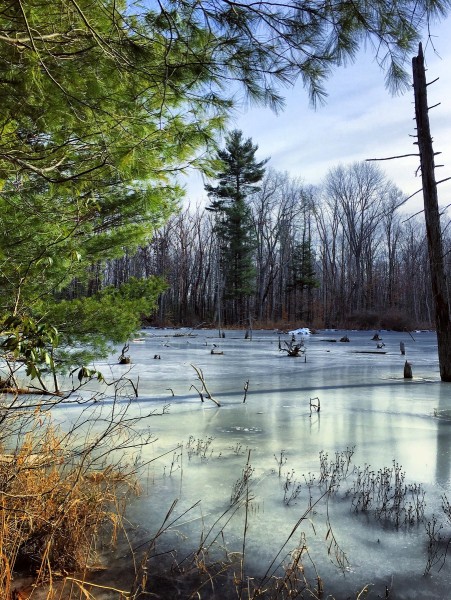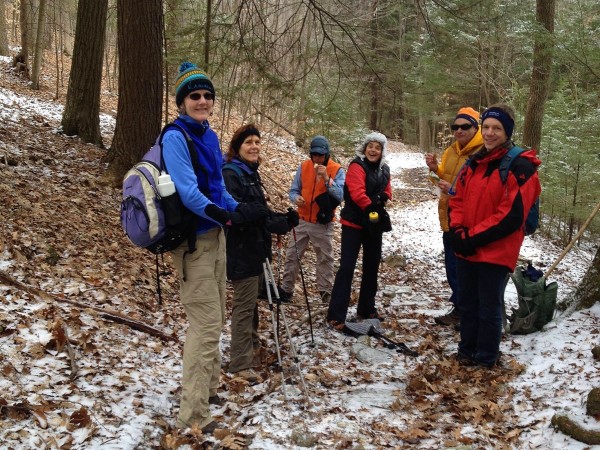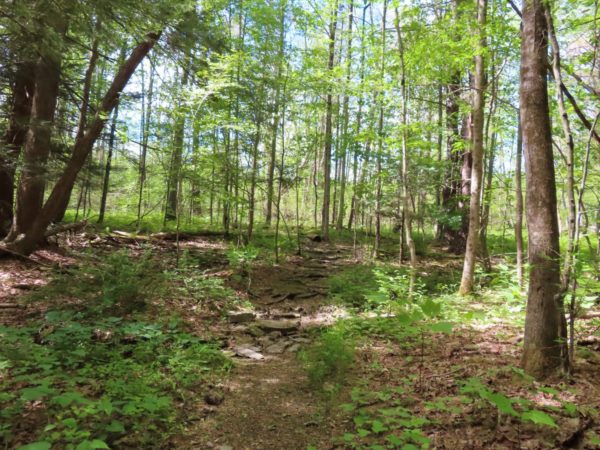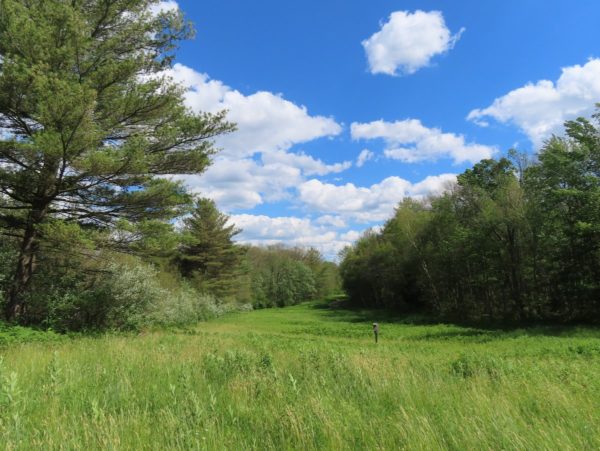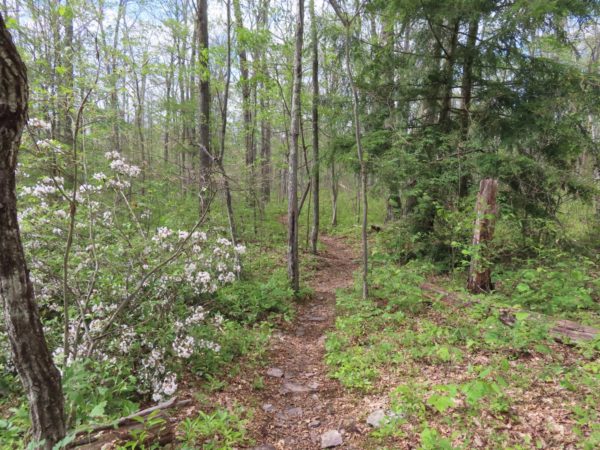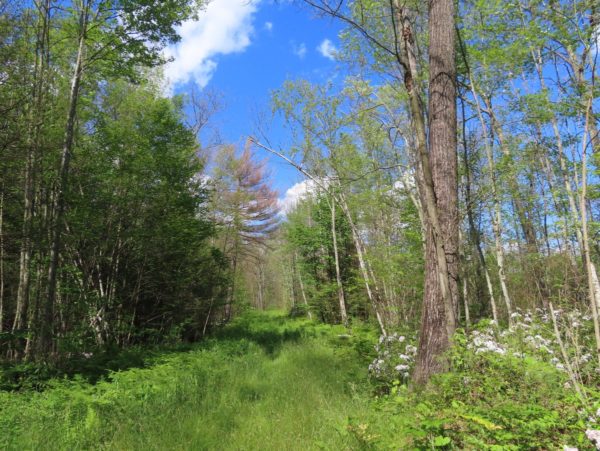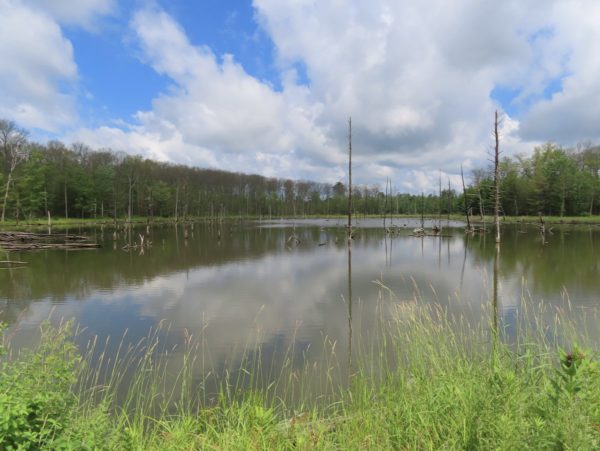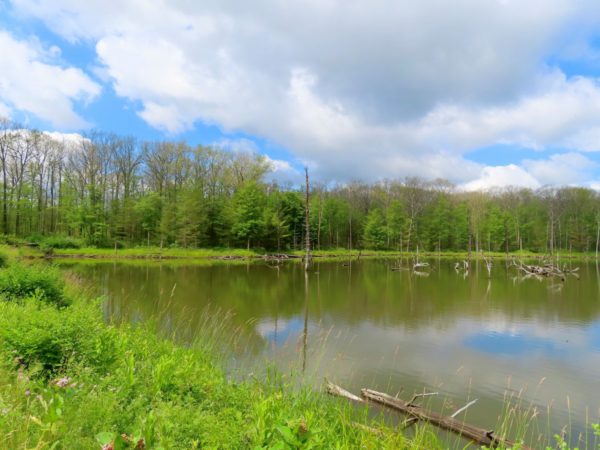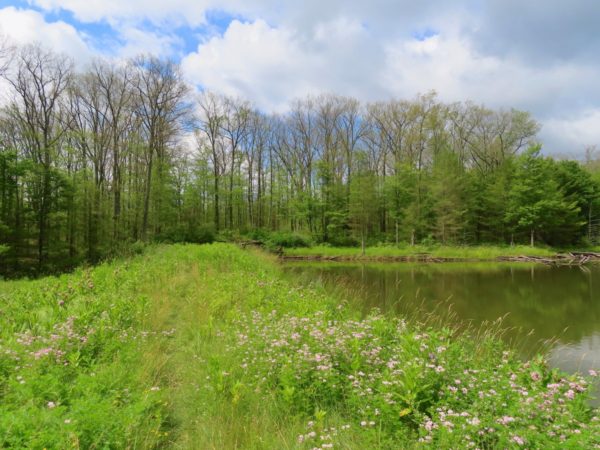Five miles west of Corning, the Erwin Wildlife Management Area (WMA) features over 2,490 acres of prime wildlife habitat and more than ten miles of trails. Deep gullies with hemlock-shaded streams add a primeval feel in sections, while deciduous forests in various states of succession make up the majority of the woodland.
The forest is predominately oaks, whose nuts are a vital source of nourishment for wide variety of animals including deer, bears, turkey, and grouse. Several small ponds also help to support wildlife. Unlike state forests that are managed with forest products as a major decision factor, wildlife management areas’ primary goal is, as expected, fostering habitat for wildlife.
Since the oaks in many parts of the Erwin WMA had reached their maturity, the DEC decided to cut vast sections of the forest in order to foster new growth of this important mast-producing tree. Oaks are shade-intolerant, so once they begin to decline, more shade-tolerant species such as maples, take over and shade-out oak regrowth.
The successional growth is well underway in portions of the forest and provides an interesting perspective on forest ecology. Differences in management techniques are not the only differences between state forests and WMAs that outdoor enthusiasts should be aware of. For example, camping is not permitted in WMAs so thru-hikers should plan accordingly.
Many hikers in the Finger Lakes region are probably familiar with the Finger Lakes Trail (FLT) and the mostly concurrent North Country Trail (NCT). Some may even be familiar with their more popular branch trails, e.g., the Bristol Hills Trail, the Onondaga Trail, and the Interloken Trail. But how about the Crystal Hills Trail? The Crystal Hills Trail (CHT) is a more recent entry onto the list of long trails in New York. Similar to the NCT, the CHT extends far beyond New York. It is actually a part of the Great Eastern Trail (GET), which is a north-south-oriented trail extending from New York to Alabama. If that sounds familiar it is because it parallels the Appalachian Trail, which also starts in the south, specifically Georgia, but ends in Maine.
The CHT is only a small portion of the trails available within Erwin Wildlife Management Area. Most of the trails that crisscross the unit are one-way but can be combined with the rustic access roads to form loops of varying lengths.

